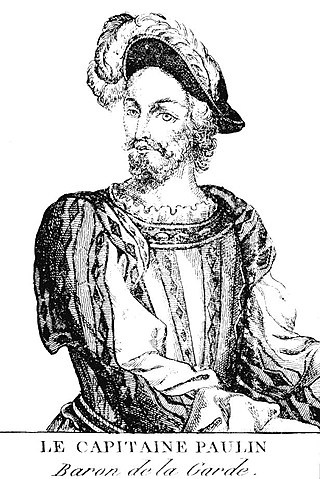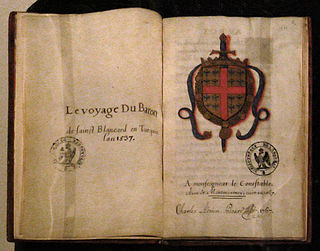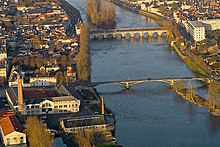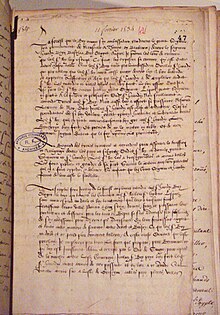
Hayreddin Barbarossa, also known as Hayreddin Pasha, Hızır Hayrettin Pasha, and simply Hızır Reis, was an Ottoman corsair and later admiral of the Ottoman Navy. Barbarossa's naval victories secured Ottoman dominance over the Mediterranean during the mid-16th century.
Salah Rais was the 7th King of Algiers, an Ottoman privateer and admiral. He is alternatively referred to as Sala Reis, Salih Rais, Salek Rais and Cale Arraez in several European sources, particularly in Spain, France and Italy.

The conquest of Tunis occurred in 1535 when the Habsburg Emperor Charles V and his allies wrestled the city away from the control of the Ottoman Empire.

The siege of Nice occurred in 1543 and was part of the Italian War of 1542–46 in which Francis I and Suleiman the Magnificent collaborated as part of the Franco-Ottoman alliance against the Holy Roman Emperor Charles V, and Henry VIII of England. At that time, Nice was under the control of Charles III, Duke of Savoy, an ally of Charles V. This is part of the 1543–1544 Mediterranean campaign of Barbarossa.

The Franco-Ottoman alliance, also known as the Franco-Turkish alliance, was an alliance established in 1536 between Francis I, King of France and Suleiman I of the Ottoman Empire. The strategic and sometimes tactical alliance was one of the longest-lasting and most important foreign alliances of France, and was particularly influential during the Italian Wars. The Franco-Ottoman military alliance reached its peak with the Invasion of Corsica of 1553 during the reign of Henry II of France.

Antoine Escalin des Aimars, also known as Captain Polin or Captain Paulin, later Baron de La Garde, was French ambassador to the Ottoman Empire from 1541 to 1547, and "Général des Galères" from 1544.

The conquest of Tunis in 1574 marked the conquest of Tunis by the Ottoman Empire over the Spanish Empire, which had seized the place a year earlier. The event virtually determined the supremacy in North Africa vied between both empires in favour of the former, sealing the Ottoman domination over eastern and central Maghreb, with the Ottoman dependencies in Algiers, Tunis and Tripoli ensuingly coming to experience a golden age as corsair states.

Bertrand d'Ornesan, also Bertrand d'Ornezan, Baron de Saint-Blancard, was a French admiral in the service of King Francis I of France. He was general of the galleys of the Mediterranean.

Jean de La Forêt, also Jean de La Forest or Jehan de la Forest, was the first official French Ambassador to the Ottoman Empire, serving from 1534 to 1537. Antonio Rincon had preceded him as an envoy to the Ottoman Empire from 1530 to 1533. When Jean de La Forêt died in Constantinople in 1537, he was succeeded by Antonio Rincon as official Ambassador.

The 1541 Algiers expedition occurred when Charles V of the Holy Roman Empire and king of Spain attempted to lead an amphibious attack against regency of Algiers, in modern Algeria. Inadequate planning, particularly against unfavourable weather, led to the failure of the expedition.

A Habsburg–Persian alliance, Habsburg-Safavid alliance or Habsburg-Iran alliance was attempted and to a certain extent achieved in the 16th century between the Habsburg Empire and Safavid Iran in their common conflict against the Ottoman Empire.

An Ottoman embassy to France was sent in 1533 by Hayreddin Barbarossa, the Ottoman Governor of Algiers, vassal of the Ottoman Emperor Suleiman the Magnificent.

The conquest of Tunis occurred on 16 August 1534 when Hayreddin Barbarossa captured the city from the Hafsid ruler Muley Hasan.

The siege of Corfu in 1537 was led by the Ottoman Emperor Suleiman the Magnificent, against the Republic of Venice-held island of Corfu. It is part of the Ottoman–Venetian War (1537–1540), one of the numerous Ottoman–Venetian Wars of the period.

Jérôme Maurand was a 16th-century French priest of Antibes, who accompanied the French officer Captain Polin in conjunction with the Ottoman fleet of Barbarossa in 1544, as a part of the Franco-Ottoman alliance.

La Réale was a French Royal galley of the 16th century.

The Ottoman wintering in Toulon occurred during the winter of 1543–44, following the Franco-Ottoman Siege of Nice, as part of the combined operations under the Franco-Ottoman alliance.
Aydın Reis was an Ottoman admiral, known to the Spanish as "Cachidiablo" and to the Italians as "Cacciadiavolo."

Jean-Baptiste de Valbelle was a French naval officer, descended from a prominent naval family of Marseille. He is known for his role as commander of a squadron of French ships during the Franco-Dutch War of 1672–78.

The Holy League of 1535 was as ad hoc coalition of catholic states arranged by Pope Paul III at the urging of Charles V.




















